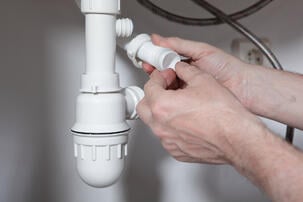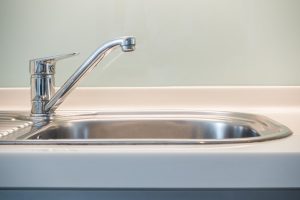Grasping the ABCs of Home Plumbing: A Beginner's Overview
Visit Our WebsiteWhat are your opinions concerning Plumbing basics: How your home plumbing works?

Plumbing is a vital facet of any home, responsible for providing clean water for drinking, cooking, and bathing, as well as getting rid of wastewater safely. Comprehending the essentials of home plumbing is crucial for each homeowner to ensure appropriate upkeep, troubleshooting, and, if required, fixings. In this novice's guide, we'll cover the essential principles of home plumbing to aid you end up being more familiar with exactly how it works.
Supply Of Water System
The water system brings tidy water right into your home from a metropolitan water source or a personal well. It includes a main water line that attaches to your home's plumbing system, usually located underground. A water meter determines the amount of water taken in, while a shut-off shutoff enables you to regulate the circulation of water right into your home.
Plumbing Components
Plumbing components are devices that supply water to numerous parts of your home and consist of sinks, taps, toilets, showers, tubs, and home appliances such as dishwashers and washing makers. Each fixture is linked to the supply of water system via pipes and installations and might have its shut-off shutoff for maintenance or emergencies.
Water Heater
The water heating system is in charge of home heating water for domestic usage, including bathing, food preparation, and cleaning. Typical types of water heaters consist of tank-type hot water heater, tankless (on-demand) hot water heater, and heat pump hot water heater. The hot water heater is connected to the water system system and delivers hot water to plumbing components as required.
Drainage System
The drain system gets rid of wastewater from your home and carries it away to a sewage therapy center or septic tank. It includes a network of pipelines, fittings, and fixtures that deliver wastewater from plumbing components to the main sewer line or sewage-disposal tank. Correct water drainage is necessary to protect against clogs, backups, and sewage leaks.
Ventilation System
The ventilation system assists preserve correct atmospheric pressure and protect against sewer gases from entering your home. Vent pipes, also known as vent stacks, extend from plumbing components to the roof, allowing sewer gases to escape safely outside. Ventilation pipelines additionally permit air to go into the drain system, assisting in smooth wastewater flow and avoiding suction or vacuum effects.
Common Plumbing Devices
Having the right devices on hand is important for performing standard plumbing repair work and upkeep jobs. Typical plumbing tools consist of flexible wrenches, pipe wrenches, pliers, pipeline cutters, hacksaws, bettors, augers (or drainpipe serpents), and Teflon tape. Having these tools easily available can aid you tackle small plumbing problems effectively.
Basic Plumbing Repairs
While some plumbing fixings might require specialist support, numerous common concerns can be addressed with basic DIY techniques. Knowing how to deal with a leaky faucet, unclog a drain, replace a bathroom flapper, or repair a dripping showerhead can conserve you time and money on plumbing repairs.
Final thought
Comprehending the basics of home plumbing is important for every homeowner to maintain a safe, useful, and efficient plumbing system. By acquainting yourself with the supply of water system, plumbing fixtures, drain system, ventilation system, usual plumbing tools, and standard fixings, you can confidently address minor plumbing problems and ensure your home's plumbing system operates efficiently.
Understanding Basics of Home Plumbing System: A Beginner's Guide
The Main Components of Your Home Plumbing System
The Water Supply System
This system is responsible for transporting fresh water into your home. It usually has a main water line that splits into two branches: one directed towards cold water services and the other connected to a water heater for hot water. The pressure is key here; it ensures water reaches all parts of your house.
The Drainage System
Once water has been used, it becomes wastewater that needs to be removed from your home. This is where the drainage system comes into play. It includes all the pipes that carry wastewater and sewage away from your house to sewage treatment facilities or septic tanks.
The Vent System
The vent system prevents sewer gases from entering your home and helps maintain the pressure balance that allows wastewater to flow out properly. These vents usually exit through the roof of your house.
Water Heating System
For those who enjoy hot showers or using hot water for cleaning, the water heater is a crucial part of the plumbing system. It can be a tankless system, which heats water on demand, or a traditional water tank model.
Common Plumbing Problems and Basic Troubleshooting
Plumbing systems, while designed to be durable, can face issues like clogged drains, leaky faucets, or low water pressure. Here are some basic troubleshooting tips:
Clogged Drains
Use a plunger or a plumber's snake to try and dislodge whatever is blocking the drain. Regular cleaning can prevent clogs.
Leaky Faucets
Often caused by worn-out washers or gaskets, these can usually be replaced by someone with basic DIY skills.
Low Water Pressure
This might be due to sediment build-up in your fixtures or a leak somewhere in your water line. Cleaning out aerators or seeking a professional to detect leaks might be necessary.
Preventive Maintenance Tips
Maintaining your plumbing system is key to avoiding emergencies. Regularly check for leaks, avoid disposing of grease down the sink, and have your system inspected by a professional plumber at least once a year.

Hopefully you liked our section on What to Know About Plumbing: Basics, Tips, and Insights. Thanks for finding the time to browse our content. Sharing is caring. You just don't know, you may just be doing someone a favor. Thank you so much for taking the time to read it.
Website